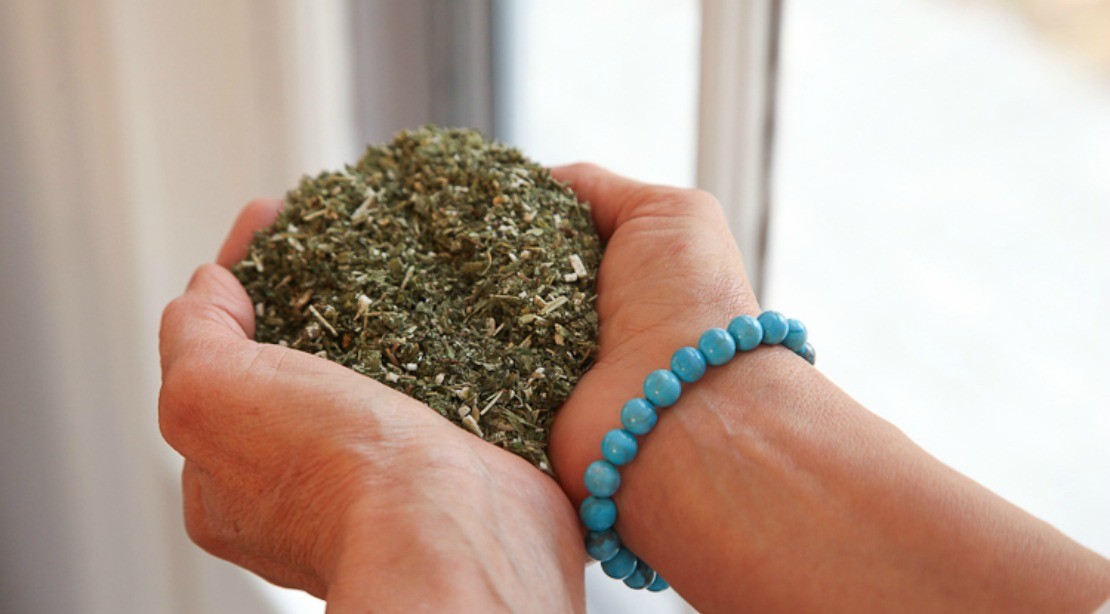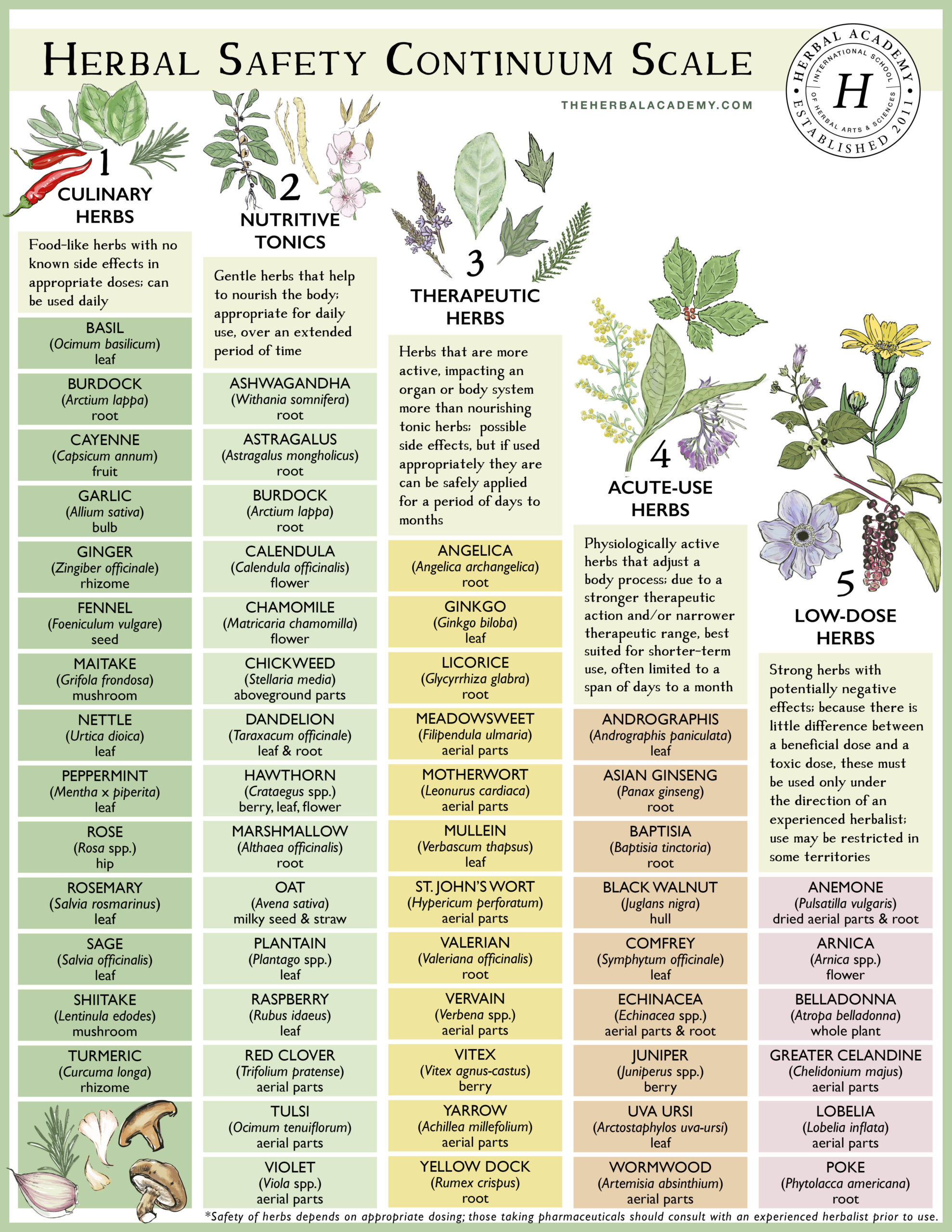
The Herb Safety Continuum Scale: A Guide to Herbal Safety Use
Herbal safety is an important consideration when it comes to determining which herbs to use, and it’s important to thoroughly research the safety concerns of an herb or any contraindications in reputable herbal sources. You can use the herbal safety continuum scale to help determine and visualize where an herb lies on the safety spectrum.
The herbal safety continuum scale ranks classes of herbs according to how gentle or potent they are on a scale of 1 to 5—1 being the most gentle, and 5 being the most potent. The higher an herb is on the scale, the more research and experience you’ll need to use the herb wisely and safely. Herbs with a rating of 1 are culinary herbs safe for daily use, while those with a rating of 5 should only be used under the guidance of an experienced herbalist practitioner.
Our Herbal Academy educators have worked hard fine tuning this Herbal Safety Continuum Scale—it’s our own trusted guide we reference and share with students.

- Culinary herbs: Food-like herbs with no known side effects in appropriate doses; can be used daily.
- Nutritive tonics: Gentle herbs that help to nourish the body; appropriate for daily use over an extended period of time.
- Therapeutic herbs: Herbs that are more active, impacting an organ or body system more than nutritive tonic herbs; possible side effects, but if used appropriately they can be safely applied for a period of days to months.
- Acute-use herbs: Physiologically active herbs that adjust a body process; due to their stronger therapeutic action and/or narrower therapeutic range, best for shorter-term use, often limited to a span of days to a month.
- Low-dose herbs: Strong herbs with potentially negative effects; because there is little difference between a therapeutic dose and a toxic dose, these must be used only under the direction of an experienced herbalist. Use may be restricted in some countries.
For the beginning herbalist and/or those looking for herbs to include in daily wellness routines, look to culinary herbs and nutritive tonics to enrich the diet and boost nourishment to particular body systems or organs. As long as there are no contraindications or safety concerns for the individual, these are typically very safe herbs and offer the opportunity to support wellness from a nutritional standpoint, helping us feel more supported as a whole. If you’re worried about taking too much, then stick with tea for now—it’s hard to drink too much nutritive tea!
In Closing,
We hope that this information will help you through the wealth of information that’s available on herbs and that you can start to see how you can actually start using them, knowing you’ve got a solid guide at hand. The good news is that you don’t have to know everything to get started. By using our Herbal Safety Continuum, you’re already making safer, smarter choices. Stick to the nutritive and everyday herbs we talked about, and then you won’t need to worry. You can build confidence, and when you’ve got a bit more training under your belt, you can move on to the other categories.








